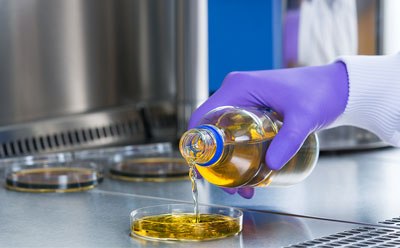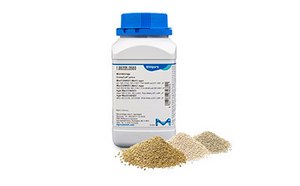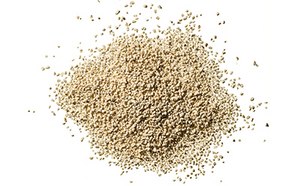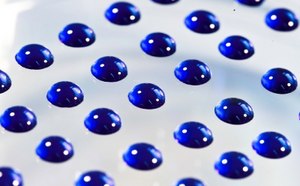Microbial Culture Media Preparation

Microbial culture media preparation is the process of mixing nutrients, agents for buffering and maintaining the osmotic balance, as well as selective inhibitors or indicators to create an agar or broth that supports the growth and the differentiation of microorganisms. Microbial culture media preparation is a routine task in the regular monitoring of spoilage and pathogenic microbes in microbiological testing.
Featured Categories
Discover high-quality microbial culture media. Choose from dehydrated or ready-to-use options, meeting industry standards and regulatory requirements.
Explore our wide range of culture media raw materials and supplements for microbiological purposes. All our raw materials and culture media supplements are safe to handle and ensure optimal performance.
Explore certified microbiological reference materials: VITROIDS™, LENTICULE® discs by Supelco®. Ideal for food, beverage, cannabis testing. Order today.
Types of Culture media
Microbial culture media should provide optimal growth conditions for all or specific types of microorganisms. The precise composition of a medium depends on the species being cultivated and the application goal. The medium pH needs to be adjusted depending on the microorganisms. Microbial culture media is classified based on several parameters, like chemical constituents, physical nature, and function. Types of media defined by these parameters are described below.
Classification of Microbial Culture Media by Chemical Composition
Synthetic (Defined) medium is a media with defined chemical commonly used to culture photoautotrophs, such as cyanobacteria and photosynthetic protists. It is widely used in research, to study microorganism metabolism.
Complex media is a media containing non-defined chemical components, such as peptone, meat extract, and yeast extract, that meet the nutritional requirements of different microorganisms. It is used to culture fastidious microbes with complex nutritional requirements.
Microbial Culture Media Based on Physical Nature
Solid medium uses 1-7% agar-agar or 10-20% gelatin to solidify the liquid broth. Solid media is used to isolate different microbes from each other, establish pure cultures, make agar slants, and make agar stabs.
Liquid medium does not contain any solidifying agents. After inoculation and incubation, cells become visible in the form of a small mass or broth blurring.
Microbial Culture Media Based on Preparation Method
Ready-to-use medium is a solid or liquid medium supplied in plates, bottles, tubes or other containers, in ready-to-use form or ready-to-use after remelting and supplementing.
Medium prepared from commercially dehydrated formulations is a medium in dry form which requires rehydration and processing before use, resulting in either a complete medium or an incomplete medium to which supplements are added before use.
Medium prepared from individual components is a medium produced by a microbiology laboratory entirely from its individual ingredients.
On-demand medium is produced by a system that keeps highly concentrated, sterile culture medium available in a laboratory over several days. By dilution with sterile water it can produce a required amount of ready-to-use medium on demand, without the need for autoclaving.
Preparation of Microbial Culture Media
Media preparation from dehydrated commercial formulations should be performed by following manufacturer’s instructions. The formulation of basic ingredients, like peptones, yeast extracts, agar, buffering substances, and antibiotics, is modified to achieve consistency of the medium. The required amount of dehydrated medium or individual ingredients are dissolved in distilled water by continuous stirring followed by heating (if necessary). Media containing agar should be adequately soaked with proper agitation before heating. The pH must be adjusted, and the medium is dispensed into appropriate containers for sterilization by moist heat in an autoclave. Heat-sensitive substances (e.g., proteins, enzymes) are sterilized by using membrane filters.
Culture media must be stored at specified temperatures to prevent modification of the composition, and no longer than the product shelf-life. Aseptic preparation and storage are essential to protect culture media from microbial infection. Water loss on storage can be minimized by impermeable wrapping and/or storage at 5 °C ± 3 °C. Chemical degradation, e.g. oxidation or antimicrobial loss, can be retarded by protection from light, heat, and dehydration.
Visit our document search for data sheets, certificates and technical documentation.
Related Articles
- Microbiologists focus on reproducible microbial growth, crucial for natural or engineered microorganisms, emphasizing reproducibility in cultures.
- The different types of culture media, that are used to grow microorganisms in the laboratory for quality control, are classified by several criteria, such as consistency, composition, or selectivity.
- Microbial culture media is available in both powdered and granulated forms. This article compares the characteristics of each culture media format with regards to safety, handling and convenience.
- Adapt culture media for optimal microbial growth, considering nutrients and environmental conditions.
- Halal-certified culture media prevent non-halal ingredient contamination, enabling microbiological QC testing without losing certification.
- See All (30)
Related Protocols
- The International Organization for Standardization (ISO) published the revised EN ISO 21528-1 and EN ISO 21528-2 standards in 2017.
- Comparison of MC-Media Pad® with different convenience solution products for indicator organism testing
- Public Health England (PHE) video contains storage conditions and directions for preparing LENTICULE discs as reference materials within solid and liquid media.
- ISO updated Listeria detection standards in 2017, specifying methods for food and environmental samples.
- The new EN ISO 22964:2017 standard specifies a horizontal method for the detection of Cronobacter spp. in food, animal feed and environmental samples.
- See All (7)
Find More Articles and Protocols
How Can We Help
In case of any questions, please submit a customer support request
or talk to our customer service team:
Email custserv@sial.com
or call +1 (800) 244-1173
Additional Support
- Chromatogram Search
Use the Chromatogram Search to identify unknown compounds in your sample.
- Calculators & Apps
Web Toolbox - science research tools and resources for analytical chemistry, life science, chemical synthesis and materials science.
- Customer Support Request
Customer support including help with orders, products, accounts, and website technical issues.
- FAQ
Explore our Frequently Asked Questions for answers to commonly asked questions about our products and services.
To continue reading please sign in or create an account.
Don't Have An Account?


